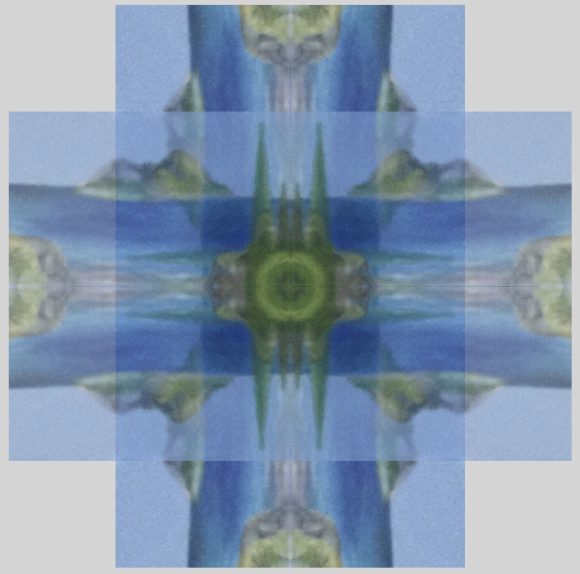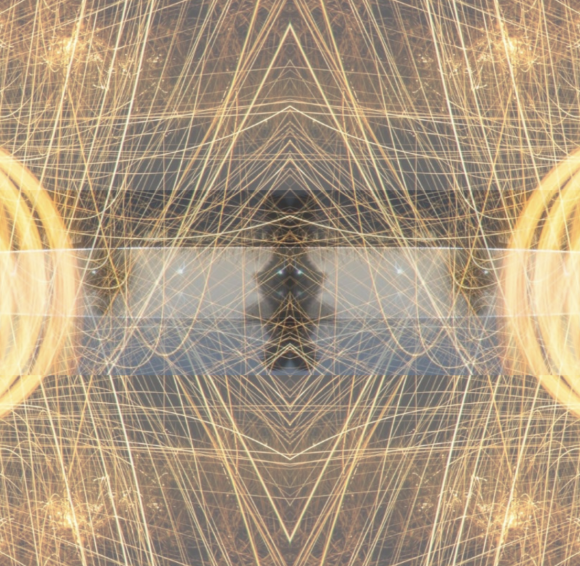[This continues an earlier line of thought.]
5. These definitions (of consciousness and the “I”) contain another distinction on which Jung insists: that between the “field” of consciousness and its center (the “I”). Only on the basis of this distinction can he then go on and ask whether there is a similar center to the larger personality (which spans both the field of consciousness and the unconscious parts posited by the basic premise).
The field of consciousness is an obvious and unproblematic, though metaphorical notion (carrying its metaphorical content over from physics, which was a popular move in Jung’s day). It starts from the everyday observation that our subjective life consists of psychological episodes, such as thoughts, feelings, memories, and so on. What makes the sum of all these a “field” is the fact that they all, by definition, share a connection with the same subject (the “I”), and thus can be considered vectors. There is a psychological field associated with each individual subject, then: each of us carries an own set of psychological episodes with us; you’re at the center of yours (each psychological episode is connected with you as their “I”), I am at the center of mine.

And if this were all there is to our psychology, then what makes up an individual person (or a personality) would simply be the sum of all psychological episodes connected to that person’s “I”; or perhaps it would be that sum in conjunction with that “I”, if we were to keep up the distinction between the psychological field (i.e., that sum) and its formal center (that “I”). But as we have seen (in section 3 above), Jung considers that to be too simplistic, because it doesn’t include anything from the unconscious. So — wouldn’t it be a natural idea to simply expand the field of consciousness with some unconscious elements, into a larger “field”?
6. The prima facie difficulty with that suggestion is of course that whatever unconscious elements we add to the field of consciousness would (again, by definition) not be associated with an “I” as their subject: no-one is aware of them. Therefore, it would be unclear why they would belong to one person rather than another, or any person at all. Of course, for some unconscious episodes, that difficulty might be solvable: if what is unconscious manifests itself as a disruption of a conscious episode (such as the notorious “Freudian slip”, or more generally any element of the “psychopathology of everyday life”, just as those measurable hesitations Jung exposed with his association experiments in his early career). Since these disruptions are connected with conscious episodes, they are also indirectly connected with a subject (the “I” associated with them), and therefore, we might assign them to a specific field of consciousness.
And I think something like this suggestion (albeit in a more developed form) must have been behind Jung’s notion that, even though we cannot directly connect anything unconscious with a consciousness, it still makes sense to talk about an individual personality (or psyche) which encompasses both a field of consciousness (with an “I” at its center) and something more out of the unconscious.
But keep in mind that so far, on this line of thought, for any element of that “something out of the unconscious” there must be some observable connection with (typically a disruption of) a conscious content in the person’s psyche. This is probably why Jung keeps talking of “unconscious contents” or “psychological contents produced by the unconscious”, and the like. These are “contents” not in the sense that they are contained by the psyche (as in by a container), but rather in the sense that they belong to an extended field which spans both conscious episodes (directly) and their disruptors (indirectly).
7. And this is important, for there is a further (and this time, not so prima facie) difficulty. To understand it, consider a particular occurrence of an unconscious content, say, a compulsive behavior. If the person who exhibits that behavior becomes aware of it (and, typically, suffers from it), it is a case of what we already considered: it is an unconscious content which disrupts conscious episodes, and in this way is connected (albeit indirectly), to a particular person’s “I”. But what if the person remains unaware of the disruption, and the compulsive behavior is not even realized by themselves — but only by other people in their life? In that constellation, not only is that content not part of that person’s field of consciousness (neither directly nor indirectly), but in fact it appears in some other people’s consciousness.
It is, for those other people, of course not connected to their “I”, but to a “they” — and therefore, by definition, is not related to their own subject, the center of their field of consciousness. For them it appears as an object, something out there in the external world (namely, other people’s behavior). But this clarification holds only as long as we do not include the notion of projection in our considerations. If what the other person (the observer of the the compulsive behavior) is aware of is a projected content of a shared collective pattern (e.g. an archetypal one), then we have a curious situation with respect to what is conscious: the person exhibiting the behavior is not aware of that behavior; the other person is aware, but still unaware of its character as projected — and thus we have a content which is conscious in at least some respect, but appears in neither field of consciousness. (It is also somewhat unclear in what sense this psychological content can be assigned to either, or both individual personalities.)
8. So later on, Jung adds a further degree of extension to that extended field of which I have said above (section 6) that it spans both conscious episodes (directly) and their disruptors (indirectly): in addition to disruptive episodes originating from the unconscious, the field might even encompass entire patterns (dynamics) in the unconscious psyche. This is what Jung calls the “archetypal field”:
[…] wie jeder Archetypus [kann] auch das Selbst nicht im Raume eines Ichbewußtseins lokalisiert werden, sondern verhält sich wie eine den Menschen umgebende Atmosphäre von einer räumlich sowohl wie zeitlich nur unsicher abzugrenzenden Erstreckung. (GW IX/II, § 257)
This idea can only be introduced later because, again, it requires an extra premise: that of a collective unconscious, which contains those patterns (the archetypes). I have already mentioned that, awkwardly, this premise has no natural place in the line of thought that makes distinctions such as the conscious and unconscious, or introduces the notions of a field of consciousness and its center, the “I”. However, once it is introduced, it can serve as backing for the positing of an archetypal field surrounding the field of consciousness; and the image here is that those episodes where unconscious contents disrupt consciousness are merely the occasional peak breaking through the cloud cover, whereas the landscape on the ground, though extended and with elaborate structures, remains below (outside the awareness of the individual person, i.e. outside consciousness).




[…] [This line of thought is continued here.] […]